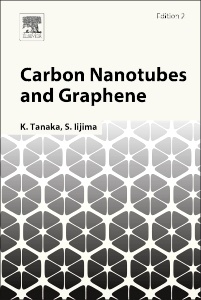Description
Carbon Nanotubes and Graphene (2nd Ed.)
Coordinators: Tanaka Kazuyoshi, Iijima S.
Language: English
Subjects for Carbon Nanotubes and Graphene:
458 p. · 15x22.8 cm · Hardback
Description
/li>Contents
/li>Readership
/li>Biography
/li>Comment
/li>
1. Preface 2. Positioning of Carbon Nanotubes and Graphene in Carbon Allotropes and Their Comparison 3. Preparation of High-Quality Carbon Nanotubes 4. Differentiation of Carbon Nanotubes with Different Chirality 5. Preparation of Graphene with Large Area 6. Electronic Structures and Band Structures of Carbon Nanotubes and Graphene 7. Optical Response of Carbon Nanotubes and Graphene 8. Phonon Structures and Raman Effect of Carbon Nanotubes and Graphene 9. Transport Properties in Carbon Nanotubes and Graphene 10. Mechanical Properties of Carbon Nanotubes and Graphene 11. Chemical Reactivity and Surface Activity of Carbon Nanotubes and Graphene 12. Preparation and Properties of Carbon Nanotube Peapod 13. Processing Technology for Carbon Nanotubes and Graphene toward Application 14. Electronics Application of Carbon Nanotubes and Graphene 15. Spin Electronics Application of Carbon Nanotubes and Graphene 16. Biological Application of Carbon Nanotubes and Graphene 17. Characteristics and Applications of Carbon Nanotubes with Different Numbers of Walls 18. Characteristics and Applications of Graphene with Different Numbers of Stacked Sheets 19. Graphene Nanoribbon and Nanographene 20. Application of Hybrid Composites Using Carbon Nanotubes or Graphene
Graduate-level materials scientists and solid state physicists or chemists working with any allotrope of carbon.
After earning a degree in physics at Tohoku University in Sendai, Japan, Sumio Iijima moved to Arizona State University as a post-doctoral associate where he initiated high-resolution transmission electron microscopy (HRTEM) (1970-1982). Using the technique, he has brought a new type of information of local atomic structures of crystals into condensed matter physics, solid state chemistry, crystallography, mineralogy and materials science. Ample experiences with the different types of materials including nanostructures of carbon materials have led him to discover carbon nanotubes in later years. In these days the technique has been known as the most powerful one in the research fields of nano-materials science and nanotechnology. In 1982 he returned to Japan and worked for 5 years on a national ERATO project on nano-particles, then joined the NEC fundamental research laboratories.
In 1991 he discovered carbon nanotubes that have initiated nano-materials science and nanotechnology and has being attracted world-wide researchers in academia and industry. Following the discovery, he has been honor
- Updated discussion of properties, structure, and morphology of biological and flexible electronic applications aids fundamental knowledge discovery
- Innovative parallel focus on nanotubes and graphene enables you to learn from the successes and failures of, respectively, mature and emergent partner research disciplines
- High-quality figures and tables on physical and mathematical applications expertly summarize key information – essential if you need quick, critically relevant data




